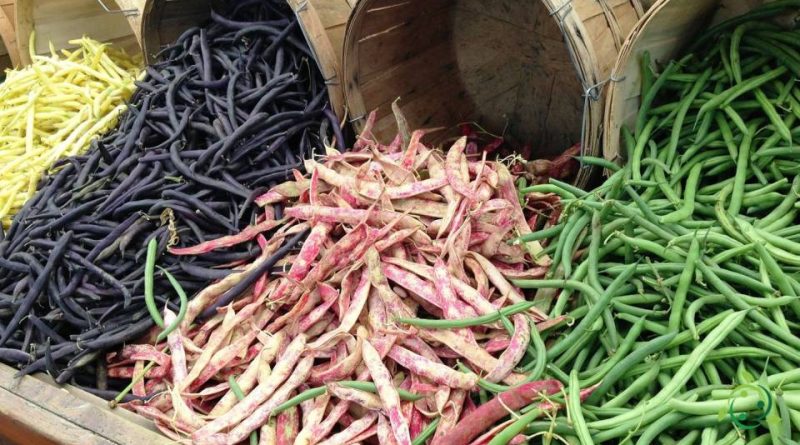Nutritional value of the bean
Nutritional value of the bean
The common bean (Phaseolus vulgaris L.) is an annual plant of the Fabaceae family native to Central America.
This plant was imported to Europe, after the discovery of America, almost completely supplanting the previously present species (Vigna unguiculata (L.) Walp.)
Features –
The bean is a herbaceous plant, annual, with different bearing depending on the variety.
There are two main groups: runner beans, similar to the original type, and upright, more branched beans.
The bean has a non-dominant main root that is quickly supplemented with lateral roots. The roots can reach a depth of one meter if the soil is suitable. the roots are in radical symbiosis with nitrogen-fixing bacteria, mainly Rhizobium etli and Rhizobium phaseoli.
The climbing stems are not very branched and wrap their support counterclockwise. They can reach 2-3 meters in height. the dwarf cultivars are more branched, erect, 40 to 60 cm tall and are better suited to the mechanization of crops.
The adult leaves are petiolate, stipulated, alternate and trifoliate. The leaflets have an oval-sharp shape, almost lozenge-shaped and are 6 to 15 cm long and 3 to 11 cm wide.
The bean is a plant with numerous species and varieties. Among these we remember:
– Borlotti;
– Cannellini;
– Crown;
– Whites of Spain;
– Black beans;
– Red beans;
– Lamon beans;
– Beans of Purgatory;
– Zolfini;
– Lima;
– etc.
Nutritional factsheet –
The nutritional value of beans, of course, even if similar, changes by species and variety and according to the cultivation technique and soil and climatic conditions.
In common they contain fasin, a toxic glycoside for humans, a protein present in variable quantities in all raw legumes. The heat destroys the fasina, modifying its structure, and it only takes 15 – 20 minutes of cooking to make it harmless.
Beans have excellent nutritional values, are rich in carbohydrates and with a good protein intake. Beans have a reduced fat content, even lower than soy, while the constituent element of the peel is fiber which plays a decisive role in the regularity of intestinal functions. The quantity of vitamins of group B is also important. The nutritional value of beans is very high, and it consists for the most part of carbohydrates, which combine perfectly with cereals, to complete a protein framework with a high biological value. equal to that provided by meat or eggs, and cholesterol-free.
Beans are very caloric (303 Kcal per 100 g) and these calories come in particular from:
– Carbohydrates (51 g per 100 of product);
– Vegetable proteins (23 g per 100 of product);
– Fats (2 g out of 100 of product);
– Water (10 g per 100 of product);
– Fiber (17.5 g per 100 of product).
In addition, there are high quantities of macroelements such as phosphorus, iron, potassium and also microelements such as calcium, as well as vitamins such as vitamins A, B, C and E.
Property –
Beans are rich in glucodrines, substances capable of lowering blood sugar. In addition to the presence of fasin, as mentioned above, they contain lecithin, a phospholipid that favors the emulsion of fats avoiding their accumulation in the blood; this makes beans a suitable food for the prevention of hypercholesterolemia (excess cholesterol in the blood).
The term noble associated with legume proteins, is in fact incorrect but was introduced to counter the saying according to which “legumes are the meat of the poor”. In reality it is very important to have a good source of vegetable proteins in the diet and to further enhance this concept the term “noble” has been introduced improperly.
In any case, these deficiencies, typical of beans and other legumes, can be easily overcome by correctly associating foods, such as combining cereal-based products such as bread and pasta.
In this case we speak of mutual integration because the amino acids which are lacking, for example pasta, are supplied by the beans and vice versa.

